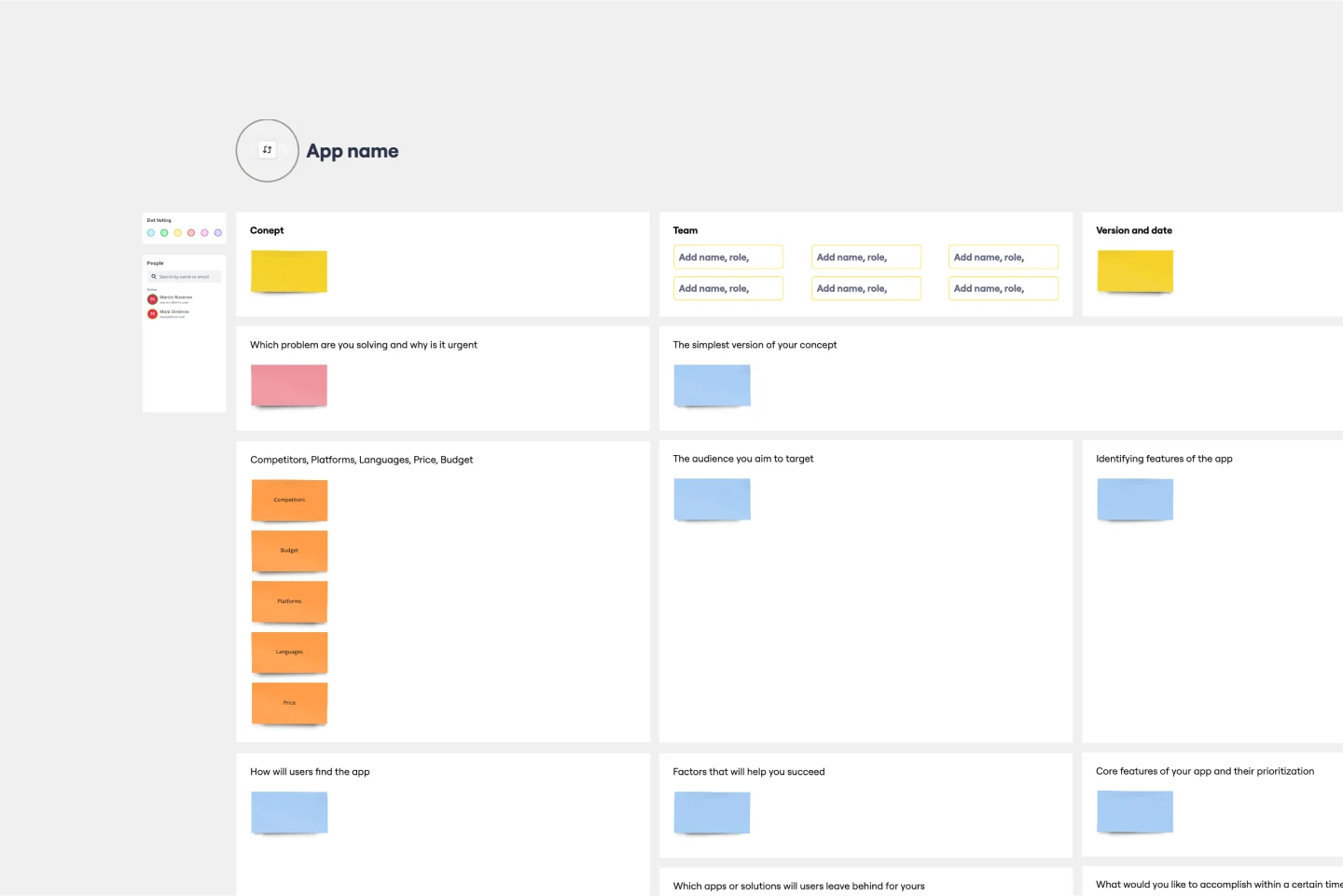About the Startup Canvas Template
Startup canvases are a useful visual map for founders who want to judge their new business idea’s strengths and weaknesses.
By articulating factors like success, viability, vision, and value to the customer, founders can make a concise case for why a new product or service should exist and get funded.
Need a canvas that helps you map out the profitability of your startup idea? That sounds like a Lean Canvas. If you have an existing business model you’d like to visualize, try out the Business Model Canvas.
What is a startup canvas?
A startup canvas helps founders express and map out a new business idea in a less formal format than a traditional business plan.
This canvas can be used as a framework to quickly articulate your business idea’s value proposition, problem, solution, market, team, marketing channels, customer segment, external risks, and key performance indicators.
Create your own startup canvas
Get started by selecting the startup canvas template, then take the following steps to make one of your own:
1. Name your business and confirm your team
Even if you haven’t registered a business name yet, the company name segment can be a space to brainstorm what you’ll call your new venture. Assemble the name of your dream team and on the details with you too.
2. Fill in each customer-related segment
From what your company stands for to your vision, values, each piece will help clarify your idea. Use each “statement” to start drafting key points based on understanding your customer’s key problems – and how your business idea offers a genuine solution.
3. Add at least two to three points for each customer-related segment
Each segment can contain at least three relevant ideas. For example, what are three market research insights or statistics that prove your business idea’s viability?
4. Check the confidence of your language
A startup canvas helps you turn broad ideas into a research-backed concept. Use clear, concise language instead of hedging statements (such as “but” or “however”). Your goal is to turn unaware investors into engaged business prospects.
5. Share the canvas with your team
After you’ve filled in all the segments, share the filled-in startup canvas template with team members or potential investors to get feedback and keep refining your business idea.






